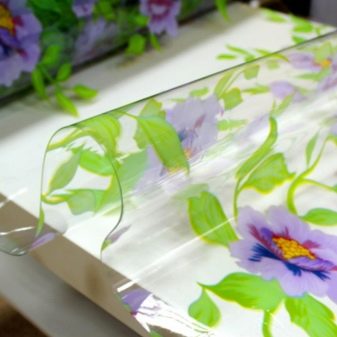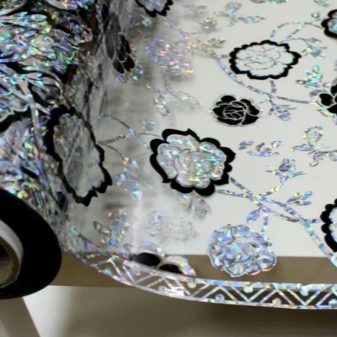How to smooth an oilcloth tablecloth?
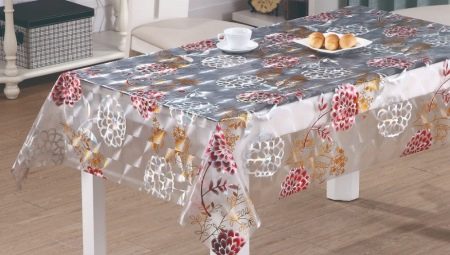
Smoothing a crumpled tablecloth when buying is a must: a product that stubbornly does not flatten looks untidy, despite the fact that it was bought quite recently and has not received any damage. Different oilcloths and tablecloths require a special approach - due to the type of plastic used in their manufacture.
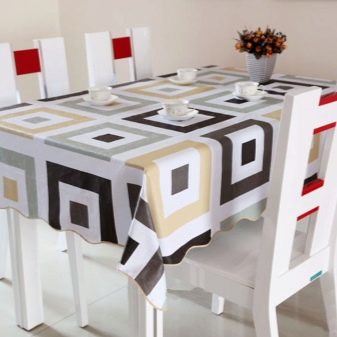

Ironing
Vinyl, polyvinyl chloride, polyethylene oilcloths, unlike natural tablecloths, do not tolerate heating above 40 degrees. At elevated temperatures, plastic exudes an unpleasant odor and warps over time. It is forbidden to wash oilcloth made of any polymer in automatic mode and at temperatures over 40 degrees, since at first the decorative image on the product is erased, then the polymer itself gradually peels off.
Oilcloths with a natural "mesh" fabric, if handled carelessly, if the temperature of the iron is exceeded, and during the washing process, they will warp.

Any plastic does not tolerate heating - for comparison, a product placed under hot sunlight crumbles from high temperature and ultraviolet radiation in a year or three. And taking into account the interests of sellers, plastic is produced as a biodegradable product - moisture, microbes, heat and ultraviolet light turn it into dust.
Heating the oilcloth with an iron, you do it at your own peril and risk. The structure of the polymer from which the product is made loses its properties. If you put the oilcloth on a hot battery, it will begin to emit a plastic smell, which indicates the beginning decomposition of polymer chains into volatile hydrocarbon compounds that are harmful to human health.When heated under a hot dish, the stand transfers some of the heat (its temperature reaches 80 degrees) to the oilcloth, which is why it loses its color and gloss: the dyes with which the drawing is printed fade.

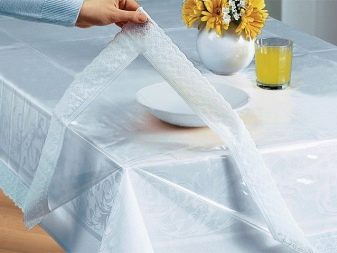
How to straighten with steam?
Polyethylene, polypropylene, polyvinyl chloride and other synthetic fibers are able to straighten when exposed to steam for a short time. The fact is that any plastic is thermoplastic: heated canvases made from it change their shape - and retain it after the temperature ends. It is still possible to straighten the glued tablecloth from folds, to straighten it from creases (during transportation).

It is necessary to smooth the tablecloth from the wrong side - the front one would quickly fade at the slightest heating, lose its presentation. You need to straighten it with a heated wet rag - the steam generated will soften the plastic a little, and the creases on the new PVC oilcloth will go away.

Instead of an iron, a steam generator is sometimes used.
other methods
If you need to quickly remove folds from the mint oilcloth, use, for example, a hairdryer. Set it to warm blowing mode. Do not bring the hair dryer closer than 25 cm, otherwise the heating will be excessive. Do not overexpose the hair dryer on the same heating place - the plastic will hesitate. The thin coating melts quickly and efficiently - unlike thick materials.
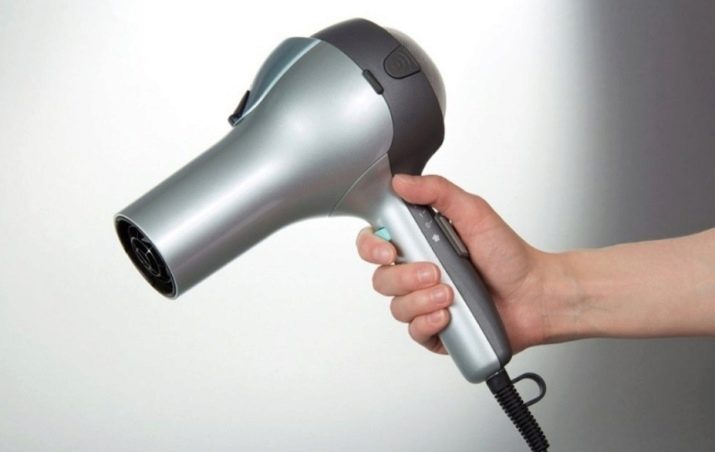
It is advisable not to try to straighten the non-woven base at all - you can put something flat and heavy on it, for example, a package with some kind of equipment. Dry prolonged heating is contraindicated for any plastic.
Holding the tablecloth over a pot of warm water, hang it on a rope with clothespins. You can hang a small weight on the lower, hanging edges - but not so that the material breaks. In this way, it will be possible to smooth out folds after transport or storage.
A silicone tablecloth can be "glued" to the table - before spreading it, a small amount of moisture is applied to the tabletop from a spray bottle. Silicone has a property that distinguishes it from other types of plastic - it sticks to the surface, due to which the oilcloth adheres to the table top and smoothes out. Silicone does not tolerate prolonged heating and stretching - overtightened material can be irreversibly damaged.
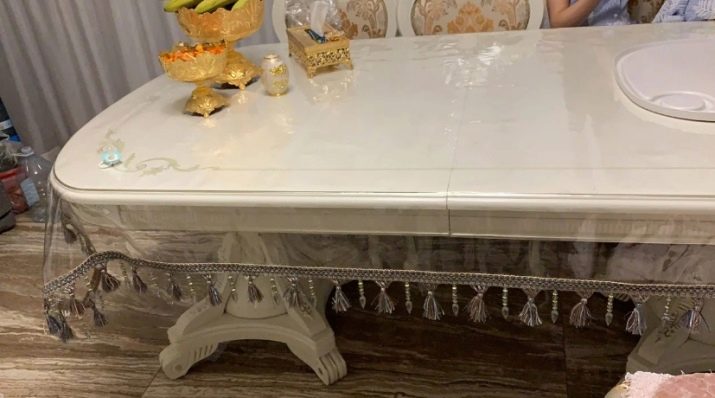
Thermal film is the most heat-resistant material... It can be heated up to 80 degrees. It is an exception to the rule - you can hold it over steam or turn on the steam iron at medium temperature. But it is impossible to overexpose this material at elevated temperatures - a value of more than 80 degrees will lead to its folding. It will withstand hot cups and plates, but pots and pans cannot be placed on it without a stand. Thermal film is sold by meter - you can buy 2m2 and use it as a tablecloth, besides, there are no openwork edges on such a cut.
